Discover early insights, build trust, set realistic expectations, and create a shared understanding among stakeholders to start from a place of clarity and purpose with a pre-flight survey.
What this solves
Projects typically start with two groups: one riding high on excitement, the other already doubting the outcome. This survey bridges that gap. It gets everyone aligned, so you can hit the ground running.
This approach builds momentum by creating a shared understanding early, so you can begin from a position of shared understanding and move straight into strategic alignment.
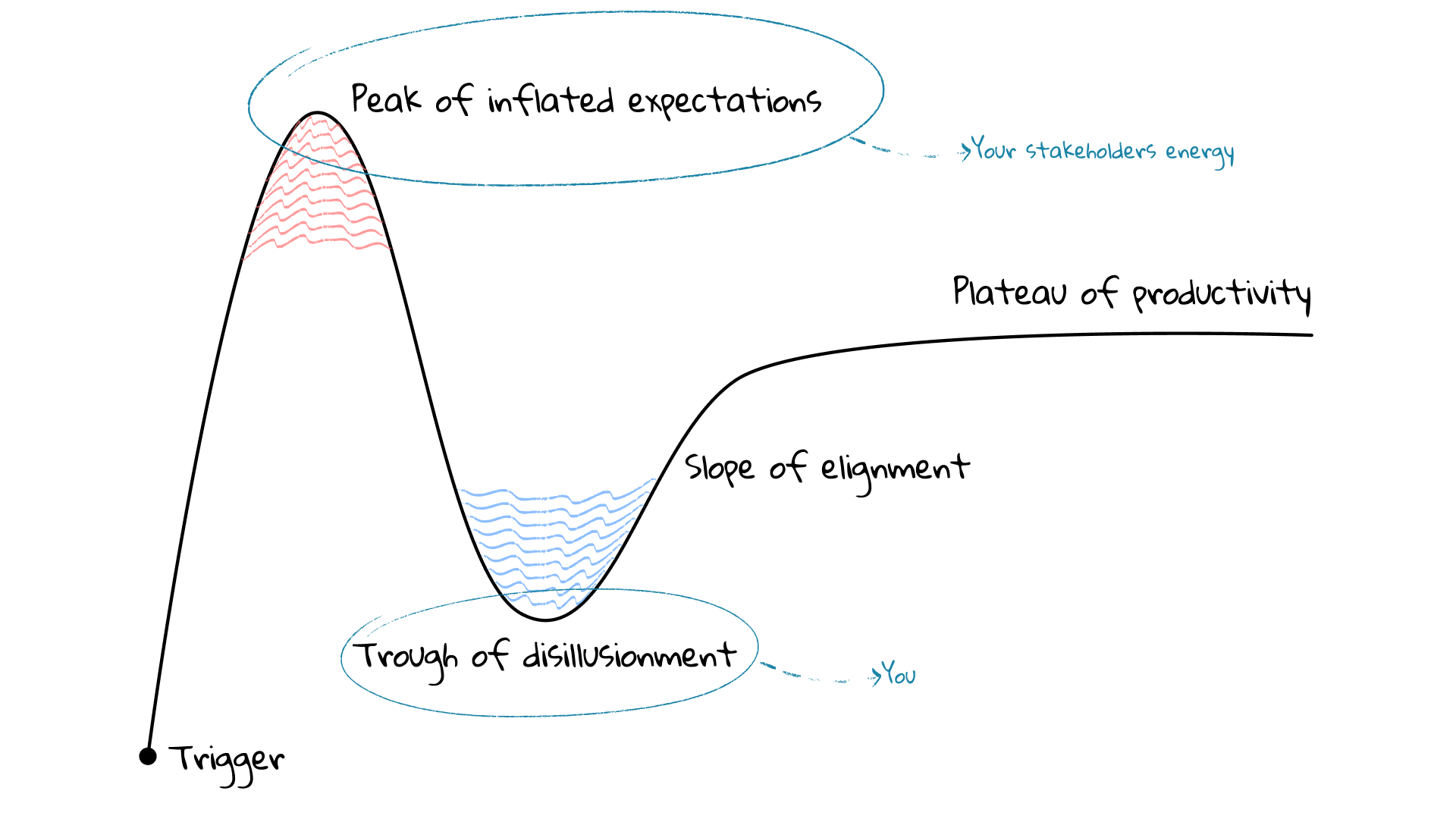
Projects like ideas are fragile in their early stages. I think of this stage as navigating the hype cycle: while one side might be soaring on the “peak of inflated expectations,” the other could be stuck in the “trough of disillusionment.” The pre-flight survey ensures everyone is on the same page before we hit either extreme, helping you maintain enthusiasm without unrealistic expectations.
What is it
A tool for clarity and alignment
Survey template
A set of open-ended questions to collect essential information fast.
Project context deck
A summary of what we know so far — no fluff, just the essentials to guide the project.
Expected outcomes
- Build trust fast
Reflecting the stakeholders own words to them builds credibility from the start. - Alignment
Get everyone on the same page before the kickoff, so you’re not wasting time on basic questions. - Managed expectations
Avoid the inflated hopes and early disillusionment by setting the right expectations up front.
Instructions
Step 1: Send the survey
Send a brief intro email to all key stakeholders position it as a collaborative step to co-create the project’s vision, not a task. — it’s a quick way to get thoughts down and start shaping the project. Focus on making it collaborative, not overwhelming.
An example message
Subject: Project name - welcome survey
Hi Name,
We need your input. It’ll be quick, I promise.
We’re gearing up for the project, but before we dive in, we’d love your thoughts on a few key questions. It should only take 15 minutes and will help us shape the project’s direction.
Thanks in advance for your time and insight!
Step 2: Gather and analyse
Review the responses. Look for themes, contradictions, and key insights. Don’t get lost in the weeds — surface the patterns and summarise the big ideas.
Step 3: Kickoff session
Use what you’ve learned to guide the kickoff. This is your chance to dive deep, not rehash basics. Set the agenda around the information gathered, and tackle potential challenges head-on.
Templates
Survey template
- What benefit do you see this change bringing to the business?
- Why is this change important?
Feel free to include any relevant metrics - Who is the target audience for this?
The more specific, the better - Which companies, products, or experiences inspire you regarding this initiative?
These can be outside your industry - What are the top 1-3 things you want to achieve with us?
Any immediate priorities for improvement - How will this project’s outcomes impact your role?
Feel free to share any ideas you’re still working through - Do you have any specific concerns about the project?
If there are none at this stage, feel free to skip - What is your name and role?
This is just to help differentiate your responses from other team members
Context deck template
This document sets the foundation for the project and serves as a shared reference.
It should answer
- Why are we doing this? What’s driving this project?
- What are we doing? Summarise the process.
- How will we achieve this? Outline the strategy.
- Who are we solving this for? Define the audience.
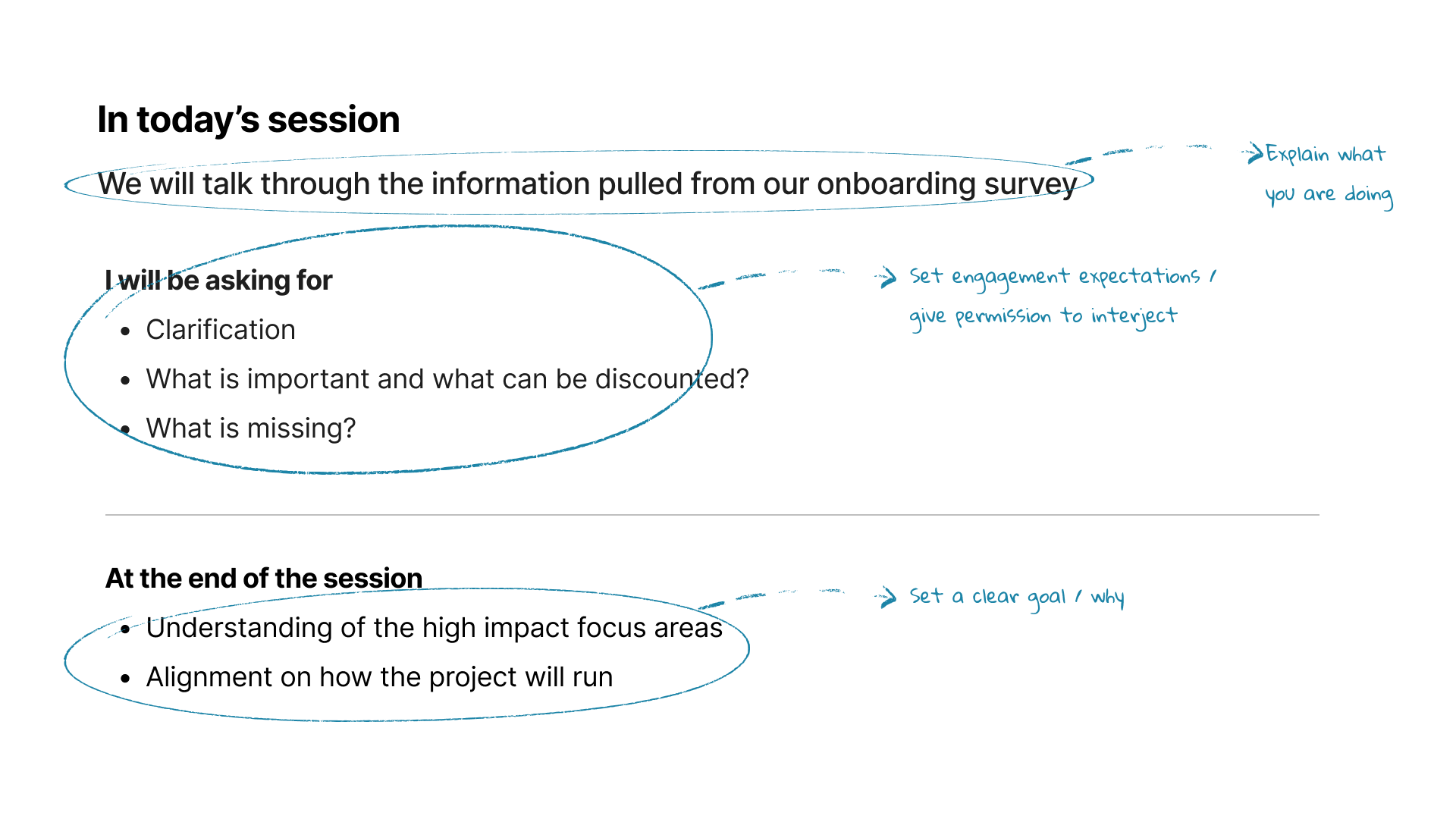
Challenge statement
Objective: Frame the core problem.
Summarise the main challenge. The classic “How might we…” works well.
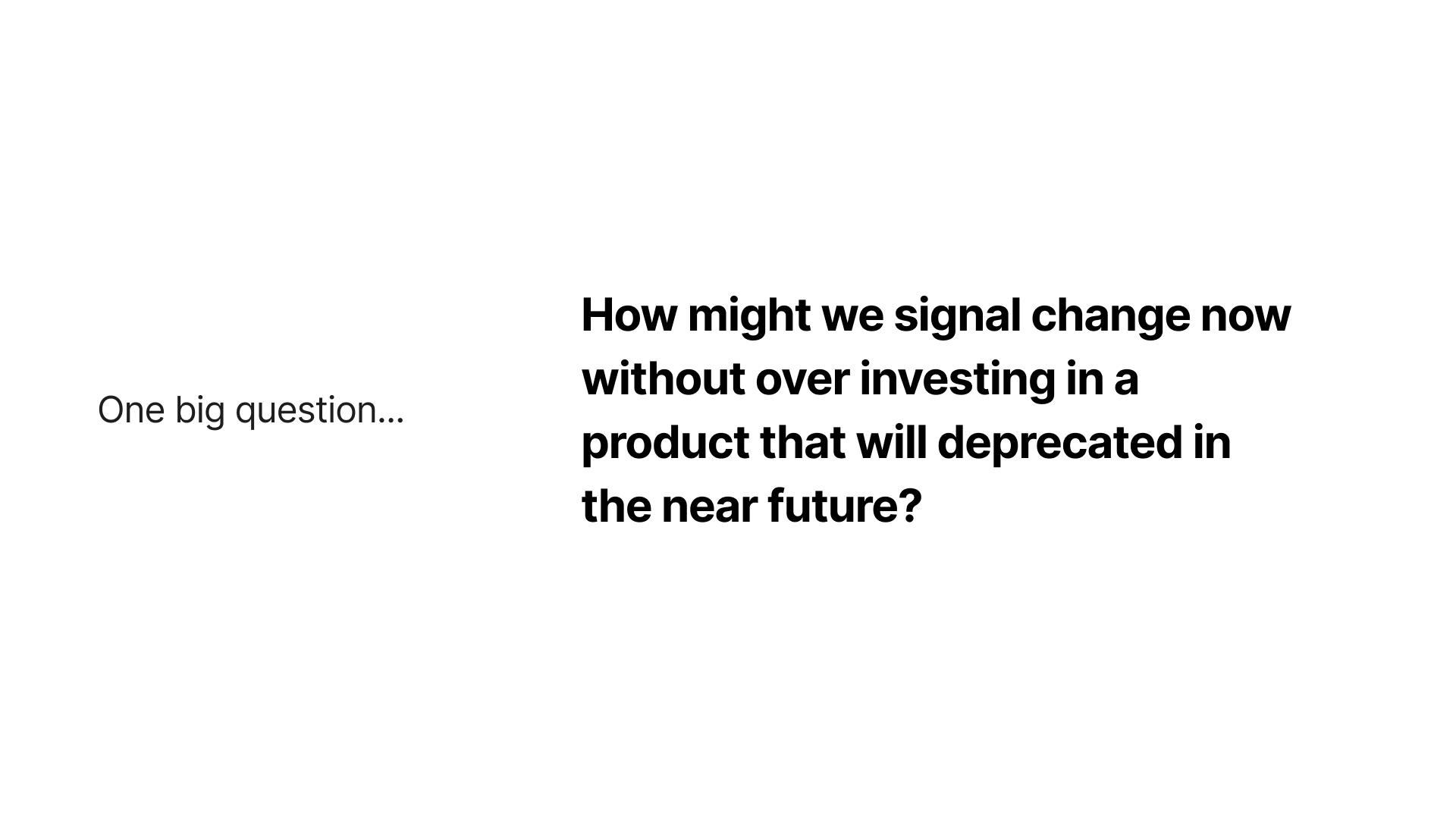
Main themes
Objective: Define scope and focus areas.
- Summarise key themes from the survey, backed by quotes.
- Highlight the primary focus. Keep the focus areas tight. If the scope feels too broad, it’ll lead to misalignment later.
- Note any themes outside the scope for future consideration.
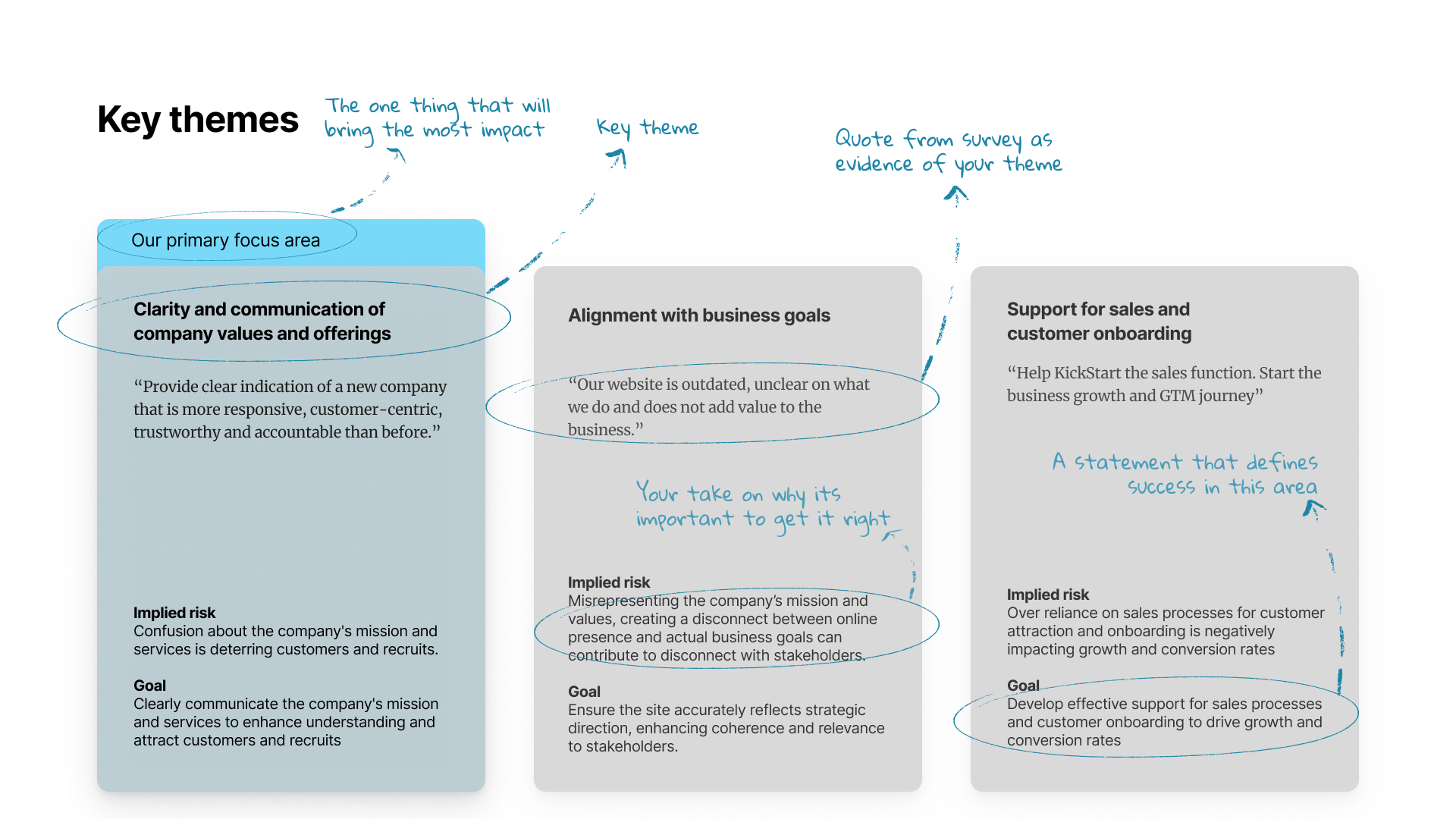
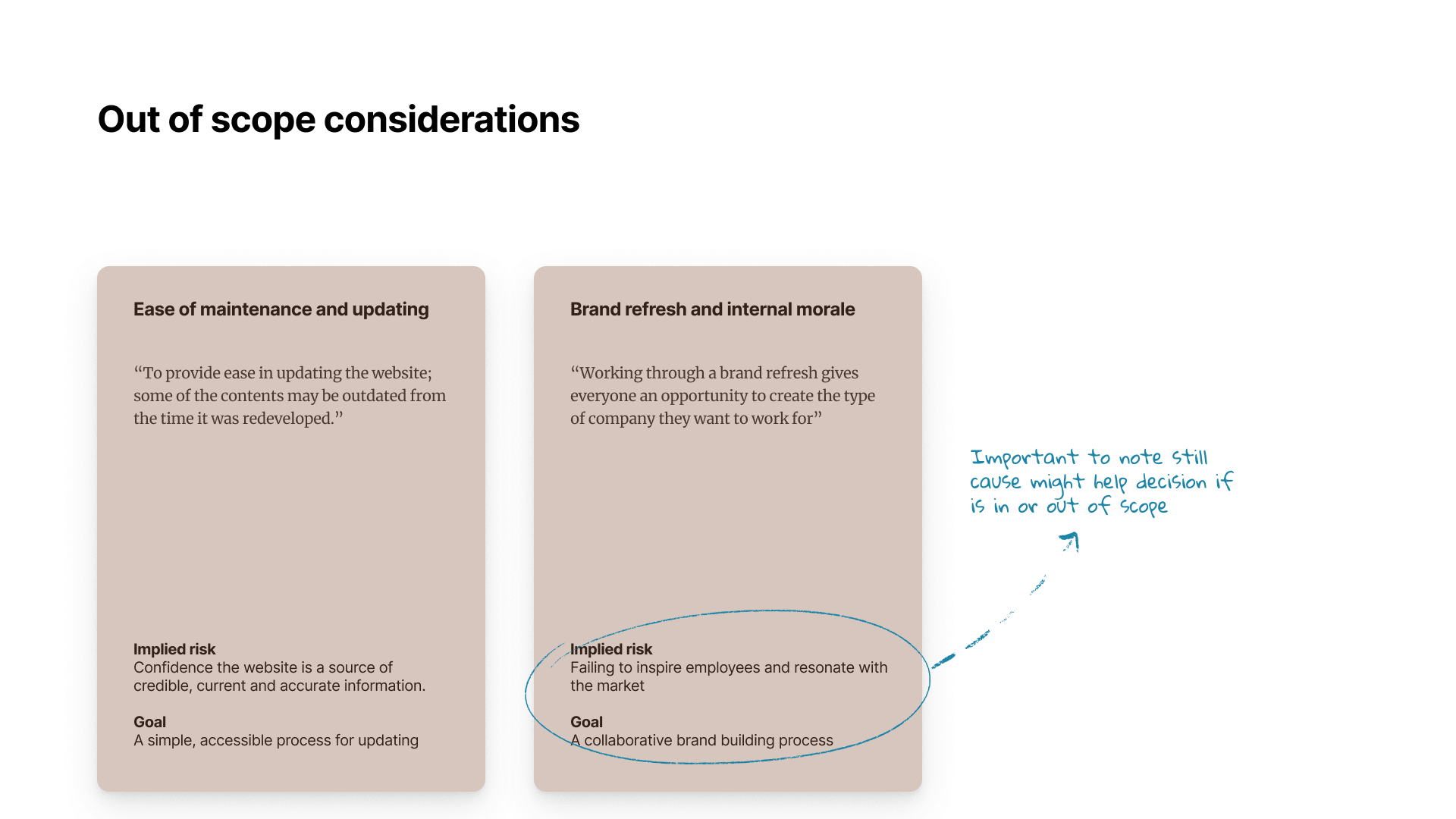

Open dialogue & validation
Objective: Ensure team alignment.
- Open the floor for group discussion around the findings from the survey.
- “Do these themes reflect your understanding?”
- “Any surprises or areas to explore?”
- Encourage input on any overlooked points.
- Encourage participants to share nuances or correct misunderstandings.
Potential challenges & risks
Objective: Identify risks early.
- Share concerns raised in the survey.
- Open discussion for feedback.
- Consider using dot voting to prioritise challenges and rank importance or relevance.

Who is this for?
Objective: Focus on the audience.
- Group and define audience attributes based on survey feedback
- Dive deeper into their needs and pain points
- Understanding your audience should shape every decision we make going forward
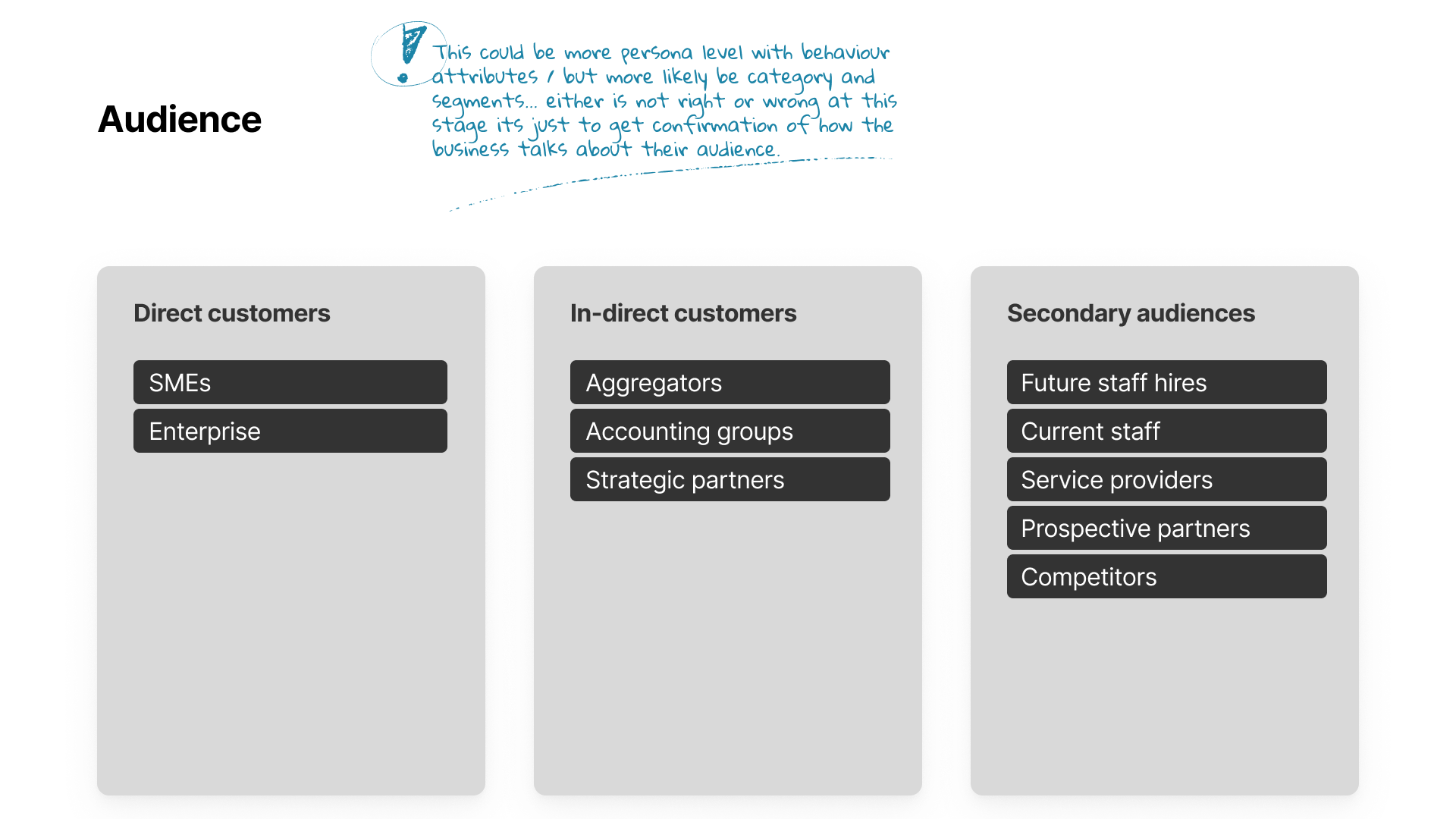
Inspiration & references
Objective: Clarify design direction through inspiration.
- List brands, products, or experiences mentioned by stakeholders.
- Explain how these influence the project’s design and approach.
- Visuals: Include logos or product screenshots where relevant.
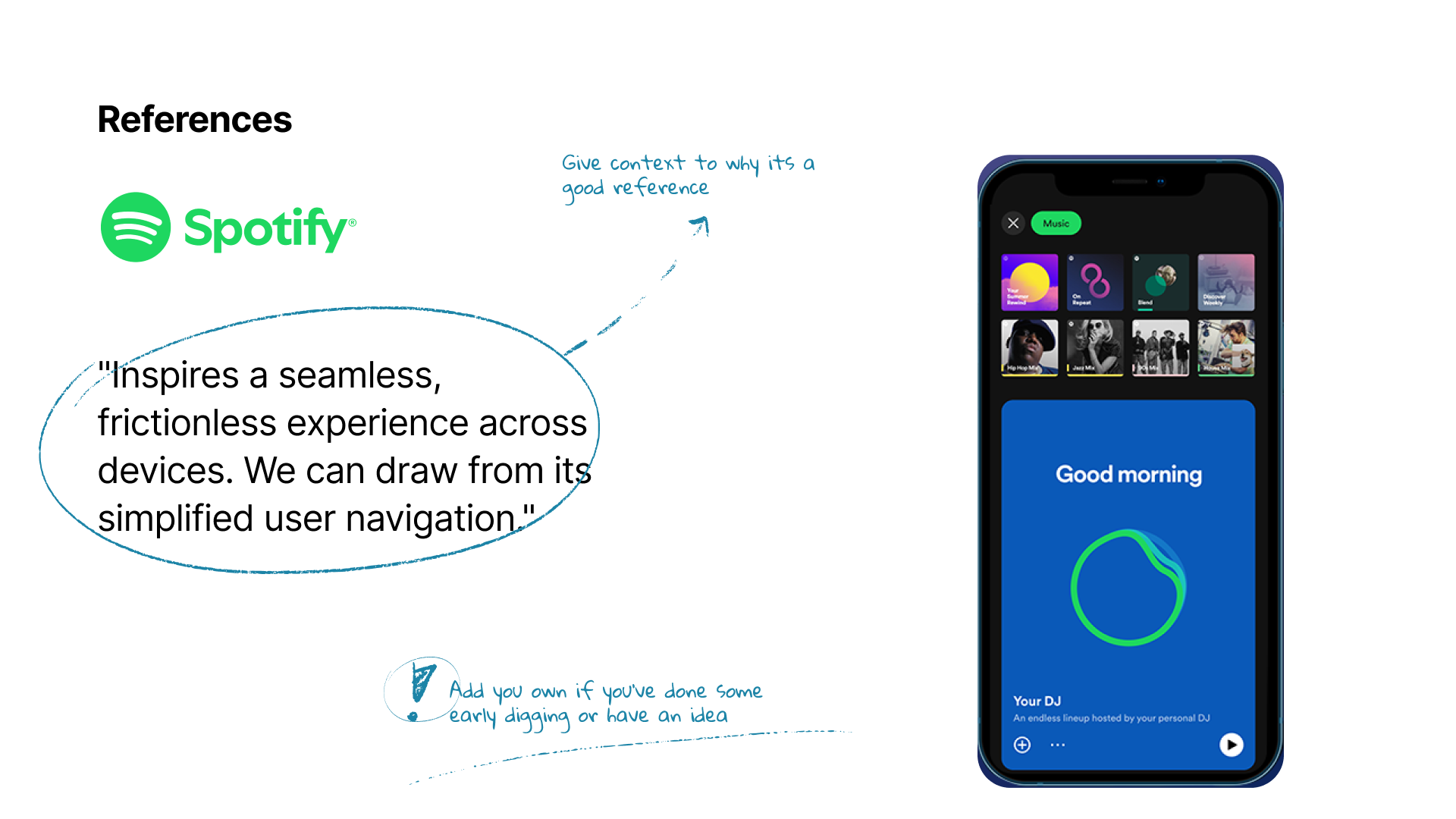
Next steps & key milestones
Objective: Provide clear direction and momentum.
- Present a high-level timeline with key phases and milestones.
- Assign immediate actions and responsibilities.
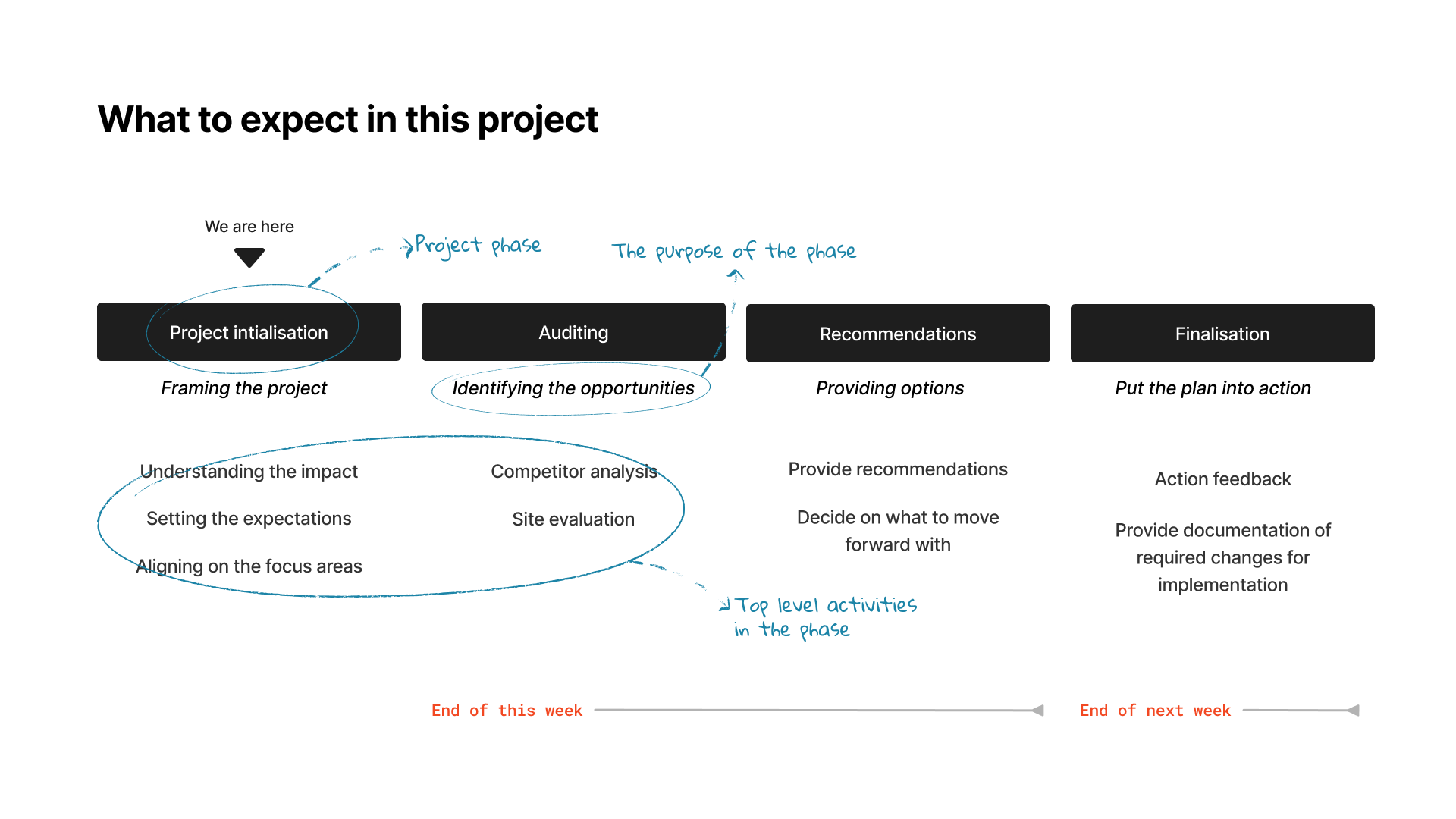
Wrap-up & final Q&A
Objective: End with clarity and excitement.
- Recap key points.
- Open for final questions.
- Reinforce alignment and enthusiasm.
- Thank everyone for their time and input.
Final thoughts
This isn’t just a survey. It’s a strategic move to build trust and gather insights before the real work begins. Every time I’ve used this approach, it’s saved us time, resources, and headaches by getting us aligned right from the start.